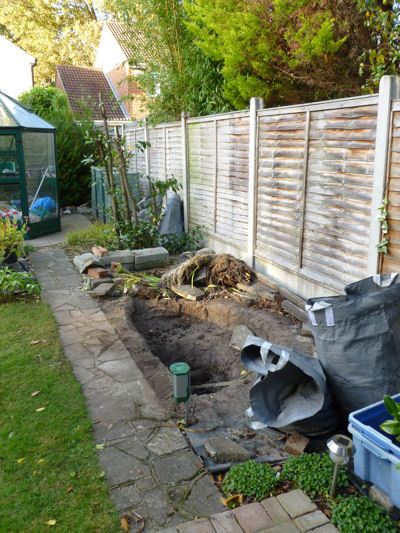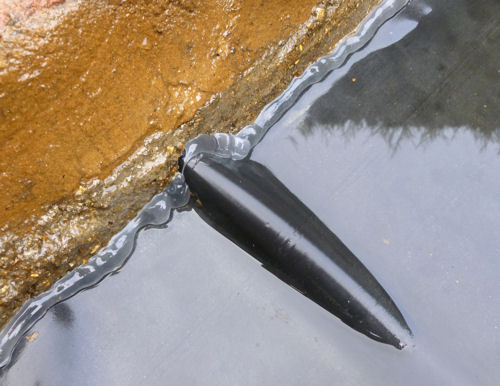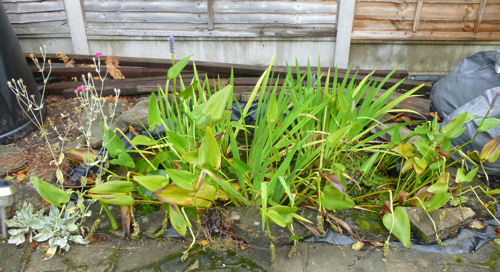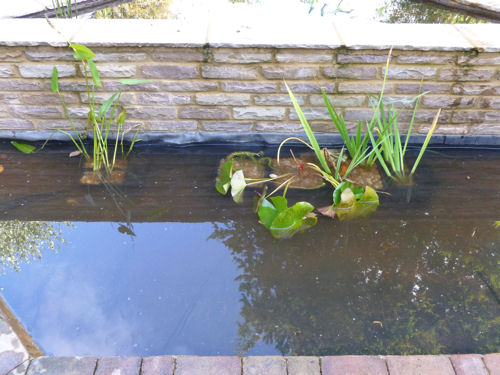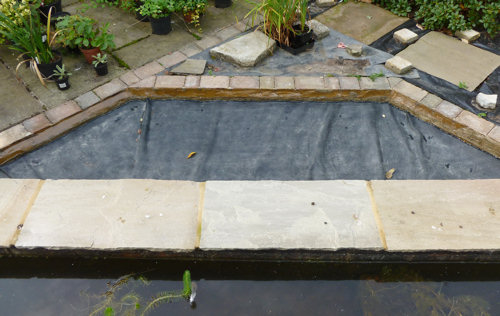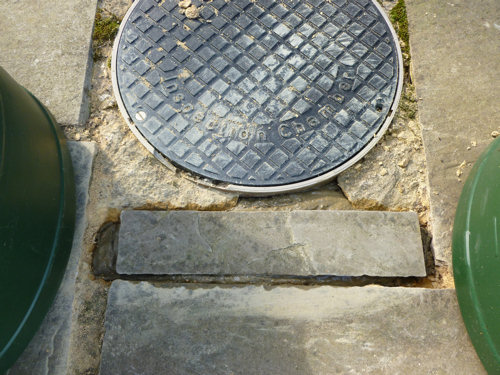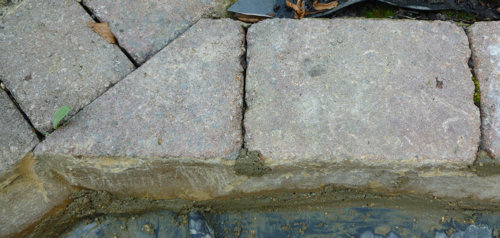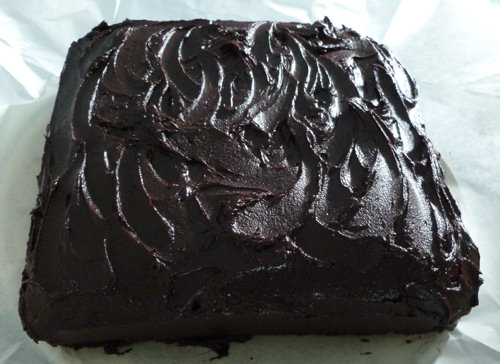Me versus the bay tree
Yesterday I emptied the temporary pond. Unfortunately there were still some newt tadpoles in the water. I managed to save some of them and transferred them to the shallow pond. I also encountered three adult frogs, but no adult newts. I thought about whether I wanted pond snails in the shallow pond, and I decided that I had done all right with them so far so I would put them in. I don’t know whether they will crawl up the wall and get into the raised pond, but I don’t suppose they will do any harm if they do.
I pulled the pond liner partly out of the pond because rain was forecast later and I didn’t want the pond to fill up again. Then I put a few bricks and other things in the hole to help frogs get out if they should jump in without noticing that all the water had gone.
Today we had a fine, dry day and I decided it was a good day for shredding things, so I cut bits off the bay tree and shredded them. I also moved the compost bins out of the way. I have been advertising the compost bins in Sainsbury’s and have managed to get rid of one out of the three I had left. Digging up the bay tree may be a harder job than digging up the Leylandii. It may take me more than one session. It will also be a big job to fill the pond. I had forgotten how deep it was.
The level of water in the shallow pond continues to fall. I think it must be leaking from more than one place. I am thinking of various ideas about what to do. One option is to remove the liner entirely and replace it with a new liner that comes up along the back of the edging blocks. I don’t know whether this will affect the stablity of the edging blocks. Another possibility is to dig up the soil at the back of the two edges of the pond that don’t butt onto the patio, and then leave it, and see which bits become damp after rainfall. I would hope this would tell me whether there are particular places where the pond is leaking from. Taking up the patio to observe the edge that butts onto the patio would be drastic, but again could be done. However, I am going to leave this to be done after completion of the main project. I feel more strongly than ever it is time to bring this ship into the shore, and throw away the oars. Forever. I have had enough of the portable herbaceous border. I want a proper garden again.
So, I am still planning to get the right hand part of the garden finished this winter if the weather is unexceptional. I should be able to get the bay tree dug up, the pond filled in and the path taken up by the end of October. I can then use the rubble from the path foundations for the stepping stones in November, and also work out the layout for the section. Then in December I can get quotes for any work that I cannot do myself, and have the work done in January. Then order lots of soil for the lawn, get it level and fertilised, and sow the lawn seed in April. And if you believe this will happen without any further slippage, you have much more faith in human nature and circumstances than I have.

